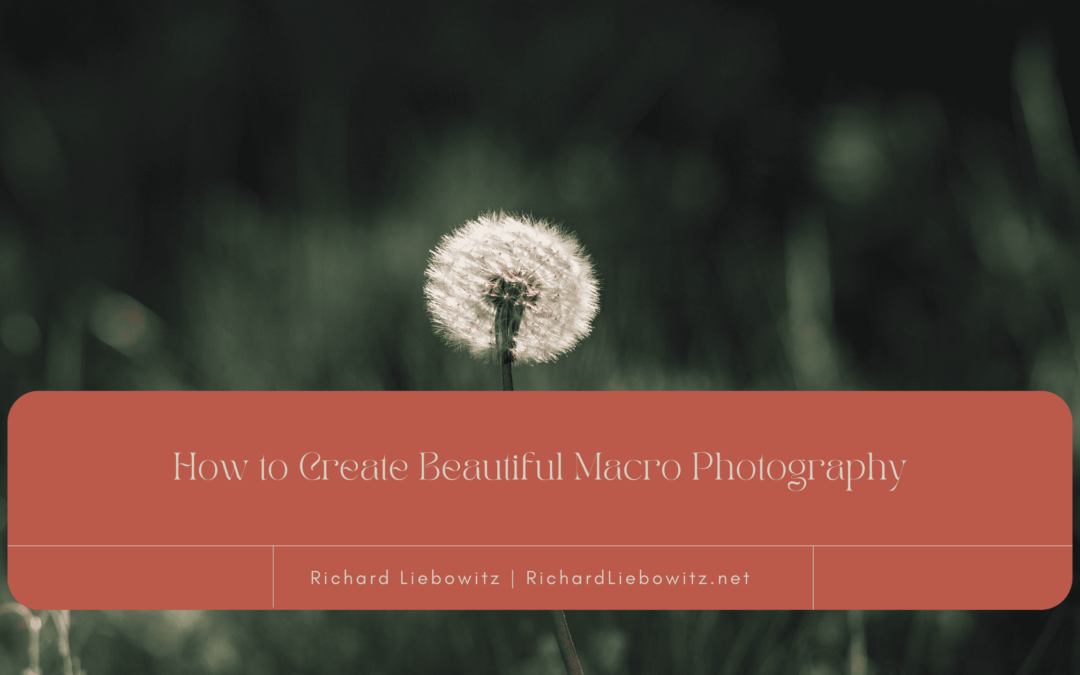Capturing the world in extreme close-ups is a fascinating endeavor that requires a keen eye, patience, and the right tools. Macro photography allows you to explore the intricate details of subjects, often overlooked by the naked eye. Whether a beginner or an experienced photographer, you can master creating beautiful macro photography with the right approach.
Choose the Right Gear:
- A Macro Lens: A macro lens is the most essential tool for macro photography. These lenses provide 1:1 magnification, ensuring you can capture small subjects up close.
- Tripod: Use a sturdy tripod to maintain sharpness and stability in your images. This eliminates camera shake and allows for precise composition.
- Remote Shutter Release: A remote shutter release or timer can further reduce the risk of camera shaking when pressing the shutter button.
- Extension Tubes: These affordable accessories can be used with a regular lens to achieve macro-like results, but they must match the quality of a dedicated macro lens.
- Ring Flash or LED Light: Appropriate lighting is crucial in macro photography. A ring flash or LED light can help illuminate your subject evenly, reducing harsh shadows.
Understanding Depth of Field:
- In macro photography, achieving a sufficient depth of field can be challenging. Use a narrow aperture (higher f-stop number) to increase the area in focus. However, this might require longer exposure times and better lighting.
- Focus stacking is the technique of taking multiple images at different points of focus and combining them in post-processing to create a single image with an extended depth of field.
Mind the Background:
- The background can enhance or detract from your macro shot. Use a plain or complementary background to isolate your subject and make it pop.
- You can also use a wide aperture to create a shallow depth of field. This blurs the background and emphasizes the subject.
Patience is Key:
- Macro photography often demands a lot of patience. Subjects can be tiny and move unpredictably. Wait for the right moment to capture that perfect shot.
- If your subject is a living creature, like an insect, approach it slowly to avoid scaring it away.
Composition Matters:
- Apply the rule of thirds, leading lines, and other compositional techniques to create visually engaging macro photos.
- Experiment with different angles and perspectives to find unique viewpoints.
Use Manual Focus:
- Autofocus can struggle with macro subjects due to their small size and intricacy. It’s often best to use manual focus to ensure you capture what you intend.
Explore Different Subjects:
- Macro photography isn’t limited to just insects and flowers. You can capture the texture of everyday objects, such as fabrics, food, or even household items.
Experiment with Lighting:
- Diffused natural light can be ideal for macro photography. Early morning or late afternoon sunlight provides soft, warm illumination.
- If you’re shooting indoors, consider using softboxes or diffusers to control the light and reduce harsh shadows.
Post-Processing Enhancements:
- Use post-processing software like Adobe Lightroom or Photoshop to fine-tune your macro shots. Adjusting contrast, color, and sharpness can make a significant difference.
Practice and Learn:
- Macro photography, like any other form of photography, requires practice. Don’t be discouraged by initial results; keep experimenting and learning from your mistakes.
Macro photography is a captivating world where details come to life. Invest in the right equipment to create beautiful macro photography, understand depth of field, and pay attention to composition and lighting. Patience and practice are essential for mastering this art, but the rewards are worthwhile. So, grab your camera, explore the miniature world around you, and capture the beauty often hidden from the naked eye.

